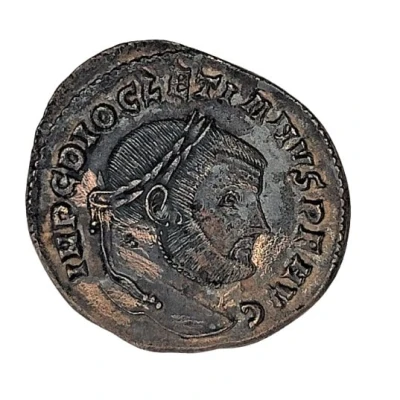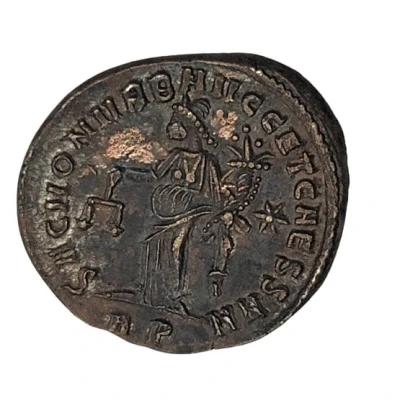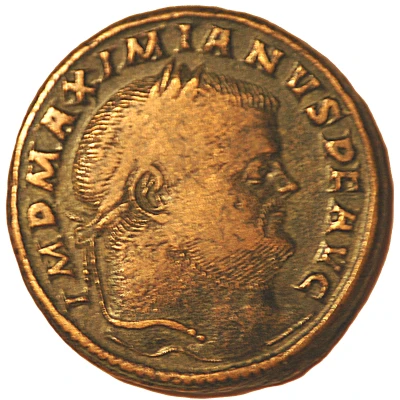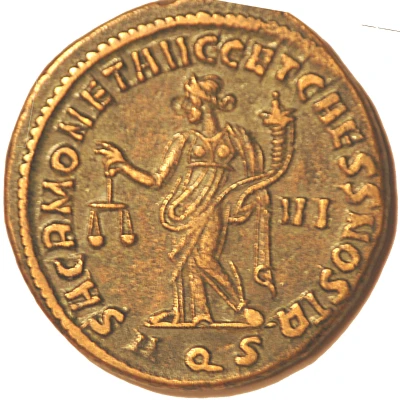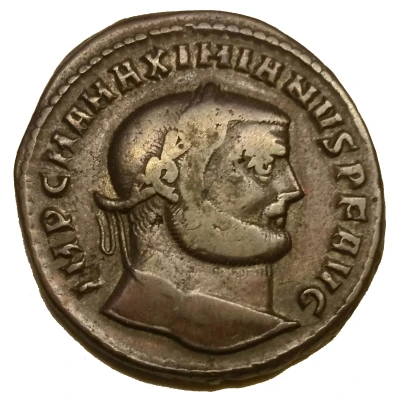
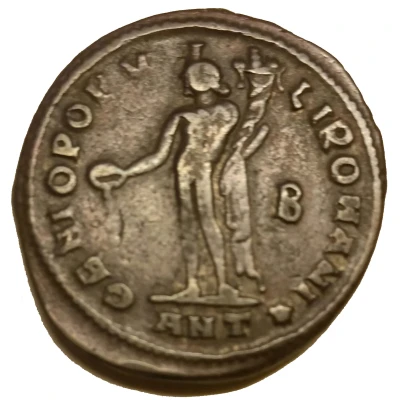

Follis - Maximianus GENIO POPVLI ROMANI; Antioch; type
| Bronze | 10 g | 27.5 mm |
| Issuer | Rome › Roman Empire (27 BC - 395 AD) |
|---|---|
| Emperor | Maximian Herculius (Marcus Aurelius Valerius Maximianus) (286-305) |
| Type | Standard circulation coin |
| Years | 302-303 |
| Value | Nummus / Follis (¼) |
| Currency | Argenteus, Reform of Diocletian (AD 293/301 – 310/324) |
| Composition | Bronze |
| Weight | 10 g |
| Diameter | 27.5 mm |
| Thickness | 1.8 mm |
| Shape | Round (irregular) |
| Technique | Hammered |
| Orientation | Coin alignment ↑↓ |
| Demonetized | Yes |
| Updated | 2024-10-05 |
| Numista | N#93395 |
|---|---|
| Rarity index | 89% |
Reverse
Genius standing left, naked but with chlamys over left shoulder, modius on head, holding a patera in right hand from which liquor flows, and a cornucopiae in left hand.
Mintmark in exergue.
Officina mark in right field.
Script: Latin
Lettering:
GENIO POPVLI ROMANI
B
ANT⭑
Translation:
“Genio Populi Romani”
(To the Genius of the Roman People)
Comment
Caesura: none on reverse, GENIO-POPV LI-ROMANI on reverse.Interesting fact
One interesting fact about this coin is that it features the image of the Roman goddess Libertas, who represents freedom, on its reverse side. This is significant because Maximianus, the Roman Emperor who issued the coin, was known for his efforts to restore the Roman Empire's power and stability after a period of political turmoil. The inclusion of Libertas on the coin may suggest that Maximianus saw freedom as an important aspect of the Roman Empire's identity and wanted to emphasize its importance to his people.
